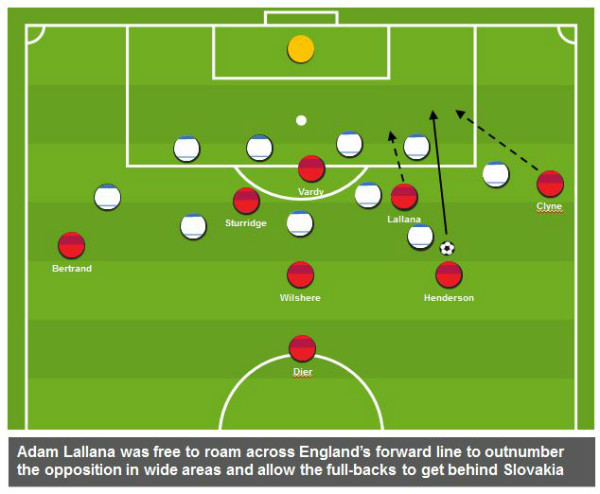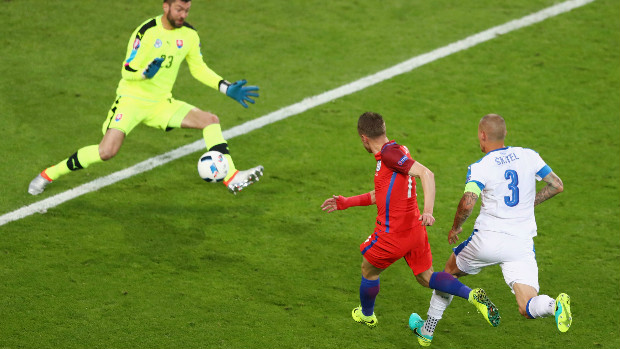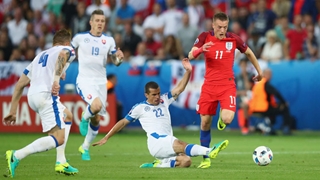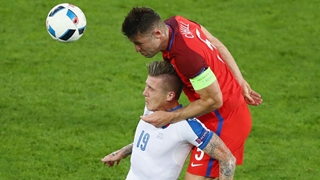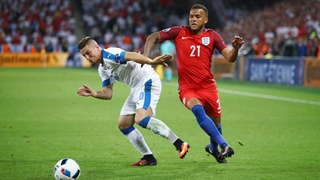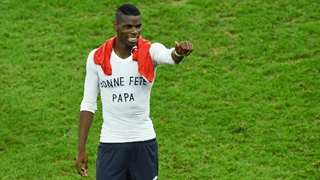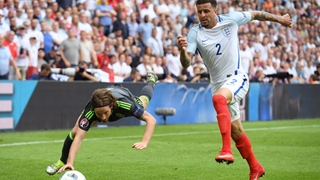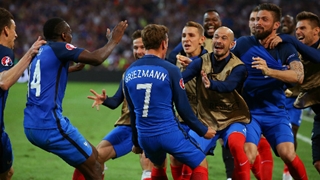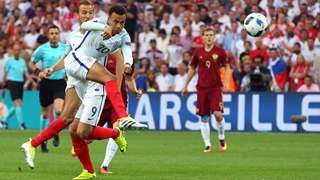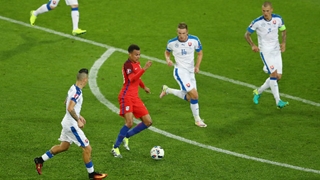
FA Education content editor Peter Glynn discusses the challenges of breaking down a compact defensive block, highlighting a number of positive signs for England as they begin to prepare for the tournament knockout stages.
1) Beating the defensive block through wide play
It has become a familiar sight –10 outfield players sat deep in their own half, densely arranged around the edge of the penalty area and prepared to surrender the ball and territory to the opposition for long periods of the game.
And, so it was for Roy Hodgson’s men against Slovakia on Monday evening and as it has been in England’s opening two games and for many other sides at Euro 2016.
Confronted with such a high number of bodies concentrated in central areas, one method to breakdown the opposition is to play around the outside of the congestion.
It has been a significant feature of the tournament so far as many teams have adopted creative combination play in wide areas with the aim of creating opportunities for pull-back crosses and in-swinging deliveries from deeper areas.
2) A right-sided focus
As with both the Russia and Wales games, England’s wide attacking players could be seen drifting inside to allow full-backs to raid forward from deep positions. Against Slovakia it again proved an effective method for creating goalscoring opportunities.
Nathaniel Clyne replaced Kyle Walker on England’s right-hand-side and continued the threat posed by the Spurs right-back at the tournament so far.
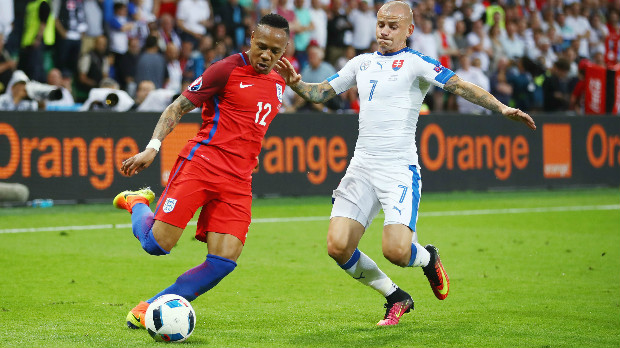
Nathaniel Clyne's high position forced Slovakia winger, Vladimir Weiss, into becoming a makeshift left-back
England’s dominance of the ball during build-up play combined with intelligent movement in central areas, allowed Clyne to adopt a high position on the right of the attack, countering the influence of Slovak winger Vladimir Weiss, who spent the majority of the game as a makeshift left-back.
It was a match-up exploited in the first-period when Clyne’s Anfield teammate Jordan Henderson weighted a clipped pass inside Weiss into space for the full-back to race onto. In turn, Clyne cut the ball back to Adam Lallana whose first-time shot was repelled.
Clyne enjoyed other moments of success from this method: running behind the Slovak defence inside two minutes to cross for Jamie Vardy to deflect over the bar and having a penalty claim at the start of the second half after Daniel Sturridge’s incisive through-pass allowed him to drive into the penalty area.
England will look to add the clinical finishing necessary to reward such build-up play in the next round.
3) Incisive forward runs and overloading wide areas
The threat England offered in wide areas was possible due to fluid attacking movement intended to pull Slovakia’s disciplined backline out of position.
Both Vardy and Sturridge regularly slipped off the front-line in order to pull a central defender out of position, allowing midfield runners to exploit the vacant space as well as creating openings for diagonal runs inside from Clyne and Bertrand.
Often the forward movement was done in sacrifice and as a decoy for passes to be played into England’s forward-running full-backs. The multiple movements emphasised the off the ball work and interchange of position necessary to disorganise the opposition and create chances at international level.
Another feature of England’s attack was to create overload situations in wide areas and Hodgson’s men regularly adopted a lopsided attacking formation in an attempt to exploit the side of the pitch where England had possession.
In the opening stages, Lallana and Henderson were a swirl of movement. The Liverpool pair regularly provided incisive as well as overlapping runs to create 2v1 situations in wide areas.
Lallana, in particular, had the freedom to roam to either flank to create overloaded attacking situations. In the opening stages the former Southampton man’s movement proved difficult for Slovakia to counter.
4) Varied attacking approach and passes behind the backline
Before Slovakia retreated to their deep defensive shape for the second-half, England showed variety in their attacking approach mixing quicker, accurate balls behind the opposition adding an element of surprise to the attack.
In the first period, both Jack Wilshere and Henderson looked to clip weighted passes beyond Slovakia’s backline in an attempt to exploit Vardy’s acceleration and forward movement.
However, in the second period with Slovakia dropping deeper and rarely venturing up-field, there were fewer opportunities to deliver similar passes into space behind the backline.
In the 73rd minute, and responding to the changing game situation, deep-lying midfielder Eric Dier showed that passes can still be delivered behind the opposition if the ball can be manipulated with the right amount of backspin, direction and accuracy.
The Spurs midfielder clipped an inch perfect straight pass over the Slovak defence to locate the run of Sturridge who failed to make contact.
Dier’s forward passing from deep positions will be another attacking weapon England will be hoping to exploit in their Last 16 game next Monday in Nice.
Peter Glynn is FA Education content editor and will be providing comment and analysis throughout Euro 2016.
Peter is editor of The FA’s coaching magazine, The Boot Room, and is a holder of the FA Advanced Youth Award and UEFA B coaching licence.
Follow Peter on twitter: @_peterglynn
*The views expressed in this article are those of the author and not necessarily The Football Association

